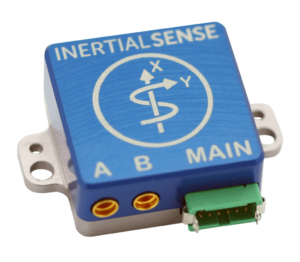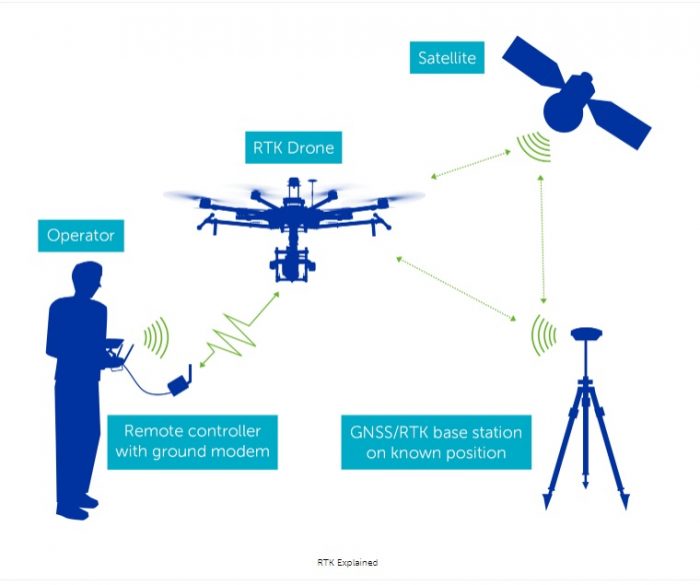Enhance Drone Efficiency with SparkNavi Drone Flight Controller and GNSS/INS Made in Taiwan
Enhance Drone Efficiency with SparkNavi Drone Flight Controller and GNSS/INS Made in Taiwan
Blog Article
Exploring the Duty of Drone Trip Controllers in Enhancing Trip Security and Navigating Performance
The innovation of drone innovation has actually significantly increased the relevance of trip controllers, which serve as the brain of these airborne lorries. By integrating real-time information from a range of sensing units, trip controllers enhance flight stability and navigation efficiency, ensuring that drones can run smoothly even in intricate atmospheres.

Recognizing Flight Controllers
Trip controllers are essential components in the functioning of drones, acting as the minds that stabilize and take care of trip operations. These sophisticated devices procedure data from numerous sensors, including accelerometers, gyroscopes, and GPS, to ensure that the drone preserves its designated flight path. The flight controller translates this data and implements commands based on pre-defined algorithms, making it possible for the drone to react to ecological changes, such as wind or obstacles.
The main function of a flight controller is to keep stability throughout flight. It accomplishes this by making real-time changes to the drone's motors and control surface areas, ensuring equilibrium and control. Additionally, contemporary trip controllers incorporate sophisticated attributes such as waypoint navigating, enabling for automated flight courses and boosted operational effectiveness.
Comprehending the style of trip controllers is critical for both enthusiasts and specialists. As innovation breakthroughs, flight controllers have actually come to be more compact and capable, incorporating fabricated knowledge to improve decision-making procedures and adjust to intricate flight circumstances.
Secret Components of Trip Stability
Accomplishing optimum flight stability in drones depends on numerous essential components that operate in concert to make sure smooth and regulated procedures. Central to this stability is the trip controller itself, which processes data from numerous sensors to preserve the preferred flight perspective. This consists of accelerometers and gyroscopes that determine activity and alignment, allowing for real-time changes to the drone's position.
One more essential element is the electronic rate controllers (ESCs), which control the power supplied to the motors. By carefully adjusting motor rates in action to flight controller commands, ESCs aid keep balance and neutralize disruptions caused by wind or abrupt activities.
Furthermore, the style of the drone's frame plays a critical function in trip security. A well-structured framework minimizes resonances and improves the total wind resistant profile, adding to smoother trip features. Ultimately, the assimilation of sophisticated formulas within the flight controller help in anticipating changes, guaranteeing a responsive and adaptable trip experience.
Together, these elements form a cohesive system that improves a drone's security, permitting accurate maneuvering and boosted performance in various flight problems.
Navigation Effectiveness Techniques
Effectiveness in navigating is necessary for enhancing drone operations, especially in intricate atmospheres. Efficient navigating strategies improve the ability of drones to traverse tough surfaces and avoid barriers, thereby improving operational efficiency and safety.
One famous technique is the application of sophisticated general practitioners and inertial measurement units (IMUs) that give accurate place monitoring and alignment information. These technologies enable drones to compute optimal flight courses in real-time, thinking about different factors such as wind conditions and possible obstacles.
One more strategy involves using algorithms for course preparation and optimization. Algorithms such as A * and Dijkstra's algorithm can be deployed to establish one of the most reliable path while reducing power usage and trip time. Incorporating equipment discovering versions can make it possible for drones to adaptively learn from their environments, boosting navigating capacities via experience.

Influence On Autonomous Drones
The integration of advanced navigation methods has actually exceptionally changed the abilities of autonomous drones, enabling them to operate with greater autonomy and precision. SparkNavi drone flight controller and GNSS/INS made in taiwan. These enhancements are primarily attributed to innovative flight controllers that use real-time information processing published here and sensor fusion, permitting drones to browse complex settings flawlessly
The influence on autonomous drones expands past plain navigating; it encompasses enhanced obstacle avoidance, improved stability throughout vibrant problems, and raised goal integrity. By leveraging formulas that incorporate equipment discovering and expert system, drones can adapt to changing conditions, making notified decisions that maximize their trip paths while decreasing dangers.
Additionally, the implementation of robust flight controllers has actually helped with the implementation of complex tasks, such as airborne assessments, delivery services, and agricultural tracking, with minimal human intervention. This capability not just enhances procedures but likewise reduces human mistake, therefore improving overall safety.
Consequently, the operational extent of self-governing drones has expanded dramatically, making them vital devices in various sectors. Their ability to carry out effectively in varied scenarios underscores the critical function that advanced flight controllers play fit the future of unmanned aerial systems.
Future Trends in Trip Control
Regularly, developments in flight control innovation are positioned to redefine the landscape of drone procedures in the coming years. Arising fads suggest a significant shift in the direction of boosted synthetic knowledge (AI) assimilation, making it possible for flight controllers to refine real-time data much more effectively. This advancement will certainly facilitate enhanced decision-making abilities, permitting drones to adjust to dynamic environmental conditions autonomously.
In addition, the implementation of artificial intelligence formulas is anticipated to enhance predictive maintenance, consequently lessening downtime and expanding the lifecycle of drone parts. This proactive technique to maintenance will be vital as address drone applications broaden Web Site across numerous sectors, from agriculture to logistics.

.png)
Finally, innovations in protected interaction protocols will certainly resolve safety and security and governing worries, guaranteeing that drones can operate effortlessly in stuffed airspaces (SparkNavi drone flight controller and GNSS/INS made in taiwan). Jointly, these patterns direct towards a future where flight control systems are not only smarter and much more reliable yet additionally qualified of operating safely in a significantly incorporated airspace
Final Thought
To conclude, drone flight controllers are essential to boosting trip security and navigation effectiveness via the innovative processing of sensor information. By keeping optimum flight perspectives and utilizing advanced formulas for course optimization and challenge avoidance, these controllers dramatically add to the autonomy and operational safety of drones. As innovation continues to progress, better innovations in trip control systems are prepared for, assuring improved performance and broadened abilities in the world of unmanned airborne automobiles.
By incorporating real-time information from a variety of sensors, flight controllers improve flight stability and navigation efficiency, ensuring that drones can operate efficiently also in complicated atmospheres.Flight controllers are integral parts in the performance of drones, offering as the minds that handle and stabilize flight procedures. In addition, modern-day flight controllers include advanced attributes such as waypoint navigation, allowing for automated trip paths and enhanced operational performance.
Central to this security is the flight controller itself, which processes information from different sensors to maintain the wanted trip mindset.In conclusion, drone trip controllers are essential to boosting trip security and navigating efficiency with the sophisticated handling of sensor information.
Report this page